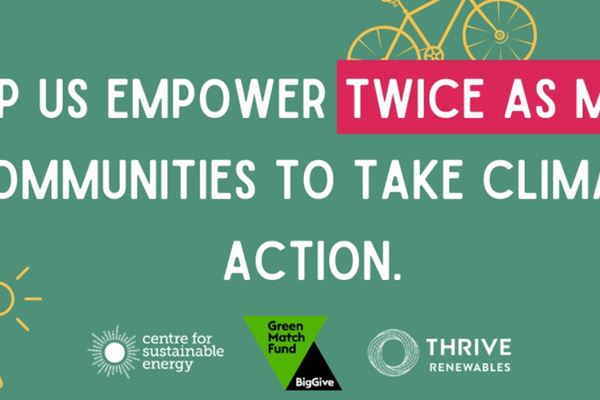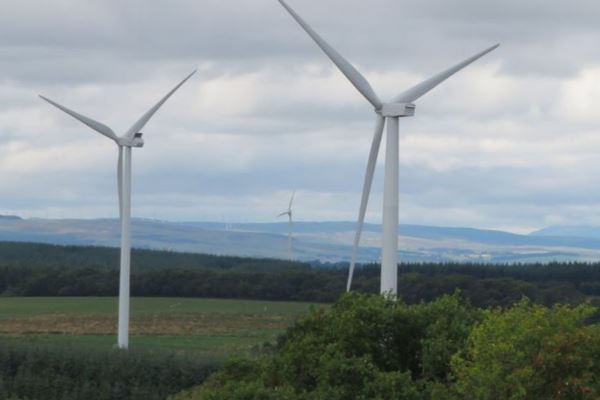Our industry body, Renewable UK, is calling on the UK Government to commit to building 30GW of new onshore wind energy by 2030, enough to power 19.5 million homes. New onshore wind will need to play an even more significant role in the energy system if the UK is to reduce emissions by 78% by 2030 as the Prime Minister promised last month.
Onshore wind is now the cheapest form of new energy generation and could support 31,000 new UK jobs by 2035. Analysis suggests that deploying 35GW of onshore wind by 2035 could also save each UK household £50 per year1. Onshore wind farms can be built in a matter of months, achieving vital carbon savings in a fraction of the time of many other energy sources.
Ensuring that the transition to a clean energy future is just and fair is vitally important. Riding Sunbeams, a project Thrive has funded, became the first UK company to enshrine a ‘just transition’ into its company articles. Renewable UK’s call for a ‘Just Transition Strategy’ will ensure energy decarbonisation is inclusive, offering fresh opportunities throughout the country.
The UK built 10GW of onshore wind between 2007 and 2017, with over 2GW being built in 2017 alone2. This is not quick enough if we’re to meet our legally binding targets. There are currently more than 2GW3 of projects waiting to be built. Longer term, by 2035 we’re in danger of losing 8GW (over half of the existing fleet)4 of capacity in existing onshore wind farms which are reaching the end of their operational life. This poses a huge risk to the country’s net zero goals, but also an opportunity. Repowering the UK’s existing onshore wind farms with more efficient, modern machines could massively increase their generation potential. In 2006 Thrive repowered Caton Moor wind farm, replacing ten turbines with eight new ones, increasing the output of the site by 700%.
Small and medium sized onshore wind farms can be sited closer the point of energy use, reducing transmission losses, increasing efficiency and cutting costs. In addition, these types of projects bring the benefits of renewables back into the communities who host them.
However there remains a barrier to realising the full potential of onshore wind in England, the planning system. New onshore wind applications in England have to demonstrate that the project is within a designated wind development area within the local plan. However, the lifecycle of local plans can be 30 years, and many have not been updated since that requirement came into place. This effectively blocks new onshore wind projects in much of England. By removing this one piece of red tape from the National Planning Policy Framework, the UK Government could unleash investment and deliver lower bills and cleaner energy supply for UK consumers and businesses.
“We’re delighted to join Renewable UK’s call for the Government to commit to 30GW of new onshore wind by 2030. Onshore wind will be an essential part of a net zero electricity system, helping the UK to decarbonise quickly and at low cost to the bill payer. Last month the Government adopted the Climate Change Committee’s sixth carbon budget in full which was a hugely positive step. We look forward to seeing these commitments followed by decisive action and support for onshore wind." - Matthew Clayton, Managing Director, Thrive Renewables
To reach net zero and accommodate increasing electricity demand, a full range of technologies is needed. We welcome Renewable UK’s further targets of 1GW of floating wind, 5GW of green hydrogen and 1GW of marine renewables by 2030.
[1] Vivid Economics (2019) Quantifying the benefits of onshore wind to the UK
[2] Renewable Energy Planning Database (REPD): March 2021 - GOV.UK (publishing.service.gov.uk)
[3] Renewable Energy Planning Database (REPD): March 2021 - GOV.UK (publishing.service.gov.uk)
[4] Renewable Energy Planning Database (REPD): March 2021 - GOV.UK (publishing.service.gov.uk)



